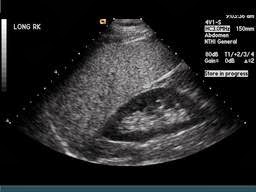Prevalent in Pre-diabetic/ Insulin resistant or over-weight (Obese) men and women
9010 Program is directed at decreasing Belly and Visceral Fat
 |
| You can actually see the fat that covers the liver (the black area) |
What is Fatty Liver Disease?
Others have what's called nonalcoholic steatohepatisis (NASH). Although it is similar to alcoholic liver disease, people with this type of fatty liver disease drink little or no alcohol. NASH can lead to permanent liver damage. The liver may enlarge and, over time, liver cells may be replaced by scar tissue. This is called cirrhosis. The liver can't work right and you may develop liver failure, liver cancer, and liver-related death. NASH is one of the leading causes of cirrhosis.
Both types of NAFLD are becoming more common. Up to 20% of adults may have either fatty liver or NASH. And more than 6 million children have one of these conditions, which are most common in Asian and Hispanic children. Recent evidence indicates that NAFLD increases the risk of heart disease in children who are overweight or obese. Both Fatty liver and Heart disease are on the rise in the US.
The cause of nonalcoholic fatty liver disease is not clear. Certain factors tend to increase risk, but in some cases, no risk factors show up. However, NAFLD tends to run in families. It also shows up most often in people who are middle-aged and overweight or obese. These people often have high cholesterol or triglycerides and diabetes or prediabetes (insulin resistance), as well.
How do you know you are at risk:
Get a measuring tape, wrap it around your waist, and check your girth. Do it while you're standing up, and make sure the tape measure is level.
For the minimal effect on your health, you want your waist size to be less than 35 inches if you're a woman and less than 40 inches if you're a man.
Having a "pear shape" -- fatter hips and thighs -- is considered safer than an "apple shape," which describes a wider waistline.
What I'm really pointing to with the apple versus pear, is that, if you have more abdominal fat, it’s probably an indicator that you have more visceral fat.
This program isn't just about looking better, it's about getting healthy no matter what shape you're in.

No comments:
Post a Comment